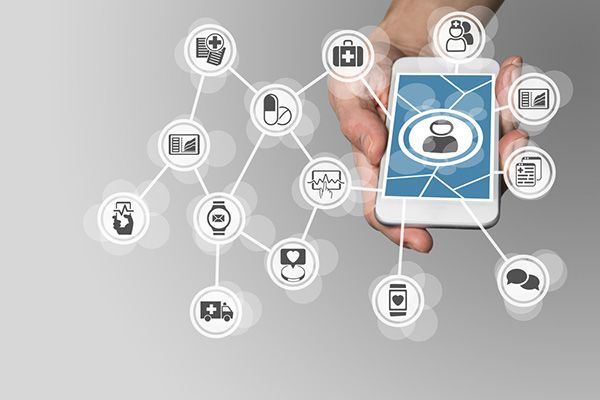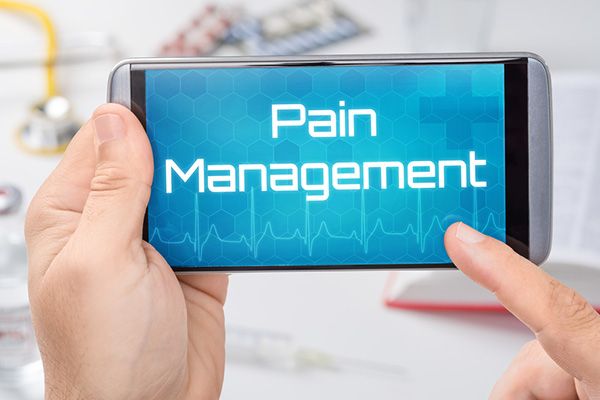Welcome back to the Healing Pain Podcast with Dr. Tonya Palermo
I hope you are well and safe wherever you are. We are a global community and I wanted to do an episode that could help you during the COVID-19 outbreak no matter where you are in the globe. Many healthcare professionals have been rapidly shifting to telehealth during the COVID-19 pandemic. As the shelter and home measures have been introduced and enforced, people with pain are looking for solutions since they can no longer attend in-person treatment for their pain. The potential for long-term isolation may have adverse effects on many living with persistent pain. Luckily in this day and age, we have eHealth and virtual measures where we can continue to provide care, treatment, and support for people living with pain.
I’ve been telling people that healthcare never closes and the treatment of pain should not stop. We have solutions to help people with pain. Here to speak to us about how to manage patients with pain during the COVID-19 outbreak using remote supported health service is Dr. Tonya Palermo. She is a Professor of Anesthesiology, Pediatrics, and Psychiatry at the University of Washington School of Medicine. She serves as the associate director for the Center for Child Health Behavior and Development or longstanding NIH-funded research program has focused on assessment and treatment of chronic pain in both children as well as adolescents.
She is specifically interested in cognitive-behavioral interventions and the delivery of psychological treatment via Telehealth and mHealth interventions for sleep disturbance, parent family factors, and the treatment of chronic pain. In this episode, you’ll learn all about the public health considerations of COVID-19 for those living with persistent pain, the potential ramifications of not treating people with pain during the crisis, and finally, the research supporting delivery of pain care via telehealth. If you’re a practitioner, make sure you download the free guide to this episode on Helpful Tips and Strategies to Implement Telehealth Into Your Practice. To download this free guide, all you have to do is text the word 176Download to the number 44222.
If you’re on a computer, you can open up a new browser and type in the URL www.IntegrativePainScienceInstitute.com/176Download. If you’re a practitioner, if you need a 100% HIPAA Compliant Telehealth platform, make sure to check out the Integrative Pain Science Institute’s Professional Membership and Telehealth platform solution where we provide you with a Zoom telehealth platform. That’s 100% HIPAA Compliant as well as all the training that you need to provide telehealth to your patients. I want to thank Dr. Tonya Palermo for joining us. We through this episode together because it’s such an important topic. She’ll talk about some of the research as well as an article that’s coming out in The Journal of Pain. Let’s begin and let’s meet Dr. Palermo and talk about Telehealth for pain management.
—
Watch the episode here:
Subscribe: iTunes | Android | RSS
Telemedicine For Pain Management With Dr. Tonya Palermo
Tonya, welcome to the show. It’s great to have you here.
Thank you, Joe. It’s great to be here.
You joined on such short notice. I want to thank you for being here and for talking to us about such an important and timely topic, which are eHealth, telehealth and everything related to it. You and a number of your associates have put out an article in The Journal of Pain that will be open access. I want to take the time to mention that because we’ll be talking about some information that article as well as other information. The name of the article is, Managing patients with chronic pain during the Covid-19 outbreak
considerations for the rapid introduction of remotely supported eHealth pain management services. Thanks for that work. How did you all manage to get that together rapidly and published?
A number of us who study chronic pain and who use eHealth and digital health in our research, as well as clinical work, started immediately discussing the impact of the pandemic on the care that was being delivered to people with chronic pain. We wanted to do something practical that we thought might be helpful to give tips to providers who are caring for these patients and also highlighting some of the issues that we need to think about.
It was great to see because obviously there are lots of recommendations in there and considerations and then some evidence to support and evidence to help point us in the right direction as far as looking at treatment after the pandemic. Let’s first start here. Telehealth is being used to triage primary care situations. People who were sick or think they have COVID. People may think that chronic pain is not crucial and not so important. Why should we continue to increase awareness around the effective treatment of chronic pain during this pandemic?
There’s a disruption in all healthcare access and many services are offering some type of telehealth to patients, but we know other services are deferring our health team visits. We want to encourage providers to prioritize care for people with chronic pain because there’s real potential for adverse effects from this disruption in care if it goes on for a while that people will lose the progress that they’ve made and possibly incur other forms of morbidity. We feel like this is important to remind providers that there’s a lot they can do remotely and to encourage the continuation of care and not having the disruption.
Not stopping things for people with pain is important. I always tell people that healthcare doesn’t close and chronic pain is part of healthcare. All of us who treat pain in a multidisciplinary and interdisciplinary way have to be prepared. That’s what we’ll be talking about in this episode. There are known risk factors for COVID-19. We hear about them on the news every day. Are these risk factors critical for people with chronic pain as well and are there some overlaps with the prevalence of chronic pain?
There are some overlaps, in particular, we know that older age is associated with increased severity of COVID symptoms. Older ages also associated with more morbidity from chronic pain and more difficulties with daily functioning. That’s an important demographic that we’re concerned about. Also, people have a lack of easy access to healthcare are particularly at risk. We know that individuals with chronic pain don’t always have easy access to care. Those are the groups that we are concerned about.
There are people with existing chronic diseases, things like diabetes, obesity and they oftentimes wind up as part of the chronic pain population as well, which we should be concerned about. As we’re all sheltered home, which is necessary in many parts of the world and almost every single part of the United States. As some shelter in place or stay home orders in place, especially as a psychologist, what do you start to think about with regard to social isolation specifically with our chronic pain population?
We addressed this a little bit in the article, but we do expect there to be increased psychological distress associated with the isolation at this time. People are not connected with their normal social networks. Their routines are terribly disrupted. Sleep is disrupted for a lot of people. All of these things we know can increase symptoms of anxiety and depression and those affect chronic pain directly, but they also lead to other consequences that we’re concerned about.
I know that you specialize in children and adolescents with chronic pain. It’s a big part of your clinical work, as well as your research work. When we start to think about kids and families at home, what are some of your primary concerns with regard to COVID and those with chronic pain?
Some of the same disruption or routines that are affecting adults are affecting children and adolescents as well. They may be more difficult for children to understand who doesn’t have the cognitive ability to have a complete picture of the pandemic. They’re relying on parents for information. There’s some interesting impact of school closures where for some kids that’s a removal of stress, but for other kids, it will affect because it takes them away from socialization and routines. There’s a mixed impact on children. For our patients with chronic pain, we are worried about the disruption in routines and when kids have a high level of uncertainty in their lives, it can create a high level of distress that can be hard to manage.
Chronic pain in itself is complex and as professionals, we try to explain, distill chronic pain down into simple language and simple explanations for people, so they understand it. How can a parent or potentially another provider explain at such a large epidemic like this to children who may not have been fully developed or may have developmental challenges with regard to understanding what’s happening?
There are a lot of good resources. WHO has a few illustrated books now that are good for young children and explaining COVID-19. For parents, some of the important messaging are that their role is to keep their child safe during this time. That’s what they’re prioritizing and that all of the things we’re doing around social distancing and not having all of these events and routines is the goal is that the parent needs to protect and keep their child safe. Coming back to that as the core message is important.
There’s a risk that potentially for some people, their pain might not be treated. There may have been people who were in the middle of receiving treatment. They were able to, let’s say, leave their home and get to chronic pain type of services. That may be disrupted or there may be, let’s say someone who’s developed new chronic pain who may not be able to have their pain treated. We’re doing our best to get up on telehealth and eHealth, whether it’s using a Zoom platform or whether it’s using a telephone. There are a lot of ways we can start to approach this. What risks do we run if we don’t treat pain at all? If we were to say, “Pain is secondary. It’s not a life-threatening condition” What risk is that in the short-term for us as a society and then as in the long-term?
When we know a condition is associated with high levels of burden and morbidity, that the consequences of halting treatment can be serious both in the short-term in terms of someone’s ability to function. Thinking down the road, whether that person’s going to get back on track with getting back to work and getting back to other important areas of life function. We’re worried about both short-term effects as well as the burden accrued by society over time. There’s an unknown risk of whether the higher rates of potential psychological distress in terms of depression and suicidality might also have separate consequences that become long-term issues as well.
What you’re saying in some ways is people talking about, “How do we get back online? How do we return to life as usual?” It may not be easy for people with chronic health conditions to turn on their normal routine again, especially if they’ve been isolated or sedentary for a long time.
It can be hard. When patients are looking to establish new care, they’re particularly in a position that’s challenging. If you’ve already had established care, you have some providers who you’re trying to reconnect with and get follow-up care from. If you have a new problem and/or looking for a new evaluation at this time, it can be more difficult. It’s an opportunity to focus on some effective self-management strategies. Those are things that we know we can implement at home. Even with all the disruptions in routines, there are some basic aspects of self-management that everyone can learn.

It’s interesting because so often we want to cure chronic pain and we want to treat patients. I hear the word self-management more and more being used, which to me is almost a bit of a silver lining because that’s what we should be doing as professionals.
We know that any chronic pain is a chronic disease. For any chronic disease, people do better when they learn how to have a lifestyle that best supports managing that disease. When they feel confident that they have some good strategies and skills, it helps them feel empowered in coping with that disease.
It’s a bit of an interesting reframe for some professionals as well because even as professionals, we’re used to going to work every day, going into a clinic where we have our nice desk, all our papers, our computer and our EMR system. We have our coworkers that we can connect with. All of a sudden, I’m at home, you’re at home and it’s a little bit different. There’s a new context for us, even as professionals, to help treat patients, which can be a bit of a change for professionals. With that, might it help certain professionals think about teaching self-management strategies a little bit more?
It’s an opportunity for professionals to explore some new resources that they may not have been familiar with and to figure out how they can integrate some of that into any Telehealth treatment that they’re doing. I hope to find that that’s beneficial and something they want to continue to do after the pandemic.
It makes me reflect on physical therapists a little bit first because there’s a trend towards psychologically informed care, which everyone’s excited about. A lot of therapists have yet to respond to that and figure out what it is? How do I do it? How does it differ from traditional psychology? We’re not psychologists, but we’re learning to implement some basic techniques and skills to support people. If we can’t do manual therapy, let’s say or there are days that we can effectively use exercise or instructing exercise, maybe because it’s not easy online. There are other skills that we can help people, education, coping skills that can be done via telehealth.
You can reinforce the positive behaviors that you see your patients doing and that goes real far at this time to let people know that they’re doing a good job with trying out some of these new coping strategies.
I know part of your research is looking into telehealth, eHealth, and different types of virtual realities as far as helping people with chronic pain. Can you tell us a little bit about what’s the research first in some of the eHealth platforms with regard to the treatment of chronic pain? I threw out a bunch of words, which mean different things we probably need to clarify some of those terms for people first.
The broadest term is telemedicine, which has been around the longest. There are parts of the world that have been doing telemedicine for decades, especially in rural areas where that have been necessary to provide care. As information and communication technologies have advanced and provided new platforms, we’ve transitioned to using some other types of care that have delivered remotely. For example, the word telehealth is a little more expansive and means that you can deliver care by the phone, by using internet supported, text supported or video conferencing. It’s opened up the type of platforms that are used. Separate from that, though there’s also been for a couple of decades, the study of internet-delivered programs that are designed for the individual to be able to work through on their own and learn pain coping skills. Those have been delivered both through internet programs as well as through Smartphone applications. There is a range of modalities available, some of which have been studied well, some of which haven’t been studied but are out there commercially.
Let’s talk about psychology first because you’re a psychologist. Psychologists can connect with people via phone or they could connect with people via a video chat. Is there any research supporting, let’s say, one over the other with regard to psychological interventions?

There have been a lot of remotely delivered psychological interventions and what has been missing is any comparison between the different modalities. For example, we know that telephone supported treatment is effective. We also know video conferencing is effective, but they haven’t yet been pitted against each other to see if there’s one superior modality. We know we can effectively deliver most forms of psychological intervention using these platforms.
If we go within to psychology itself, do we have any research that maybe, traditional cognitive behavioral therapy can be delivered more effectively than let’s say third wave psychological approaches like the ACT or maybe mindfulness? Has that been studied yet?
There’s a large range of psychological therapies that have been delivered remotely and there haven’t been differences in the ability to deliver that treatment. We should move forward with the idea that we can deliver most of this treatment remotely and that there’s good reason to assume that the same ways we deliver this in person, we should try to deliver remotely. For example, if you’re an ACT provider and you’re used to working with a patient in a certain manner, it’s adapting that for the remote delivery but using the same principles.
People can feel safe that these are evidence-based principles that can be delivered as effectively or equally effective remotely as they can in person. That should ease a lot of people’s concerns because sometimes people have some concerns about, “Should I do this remotely? Is it as effective?” Those are questions people have as well.
I know a lot of providers can be hesitant because they don’t have personal experience using either video conferencing or other forms of remote treatment. There can be hesitancy from lack of familiarity, but there should be comforted to know that we have good evidence that we can do this in this manner.
We talked a little bit about the mind. Let’s talk a little bit about the body, which is important. What about things like physical activity and exercise interventions delivered remotely?
Obviously, a useful part of chronic pain treatment. There have been some remote interventions both delivered through web-based programs as well as through apps that are to promote physical activity or to work specifically on developing exercise routines for people with chronic pain. As we learn more about how to integrate those with other forms of treatment, we’ll probably have better guidance on when to deliver those. I don’t know of a lot of studies that have delivered those alone without other forms of treatment. We don’t have a huge evidence-based. Making those adaptations, even doing parts of assessments virtually where you still can look at someone’s mobility, provide some guidance as you watch them carry out functional activities. We do have a great ability with video to make recommendations still.
From the physical perspective, video is ideal because we can see people move. If you have to do a physical assessment, if you can’t place your hands on someone and assess, let’s say their range of motion, we can still watch people move. We can look at movement patterns, the range of motion and provide them with some education and instruction on things they can do at home to stay active and to help with their pain. Things like apps. Everyone’s at home. Everyone’s on the computer and on their cell phone a little bit more. There are definitely apps out there. Things like mindfulness, you can find free mindfulness videos on YouTube. There are pros and cons to the amount of information that we have nowadays. Can you talk about maybe the pros of having what we would call asynchronous type interventions and maybe some of the cons of someone with pain downloading an app and choosing that as their sole method of treatment?
The pros of using apps and other forms of treatment at home on your own are that it’s completely self-initiated. Meaning that you can flexibly do it when you want to at your own time and in your place. It doesn’t rely on having a scheduled appointment with someone. It’s under your control. That’s the good part of it. The bad part is because it’s under your control, you may not be motivated to continue to engage in that treatment. You may need some support around how to adapt certain aspects of the strategies to your own condition or your own situation with your mobility. It can lead to some questions about how to perform aspects of the strategies.
The other downside is, how do you know what to use? There are many mindfulness apps. Which ones are good? We don’t have a good system of communicating the quality of apps to the public that can be difficult to settle on, “What should I use?” Some of the recommendations we’ve made are talking to healthcare providers about what would they recommend? What are good apps that they have used with other patients that are experiencing similar difficulties? Also, looking for apps and programs that are created by hospitals and institutions that have clearly been tested in people who have pain conditions. That can at least help you understand that this was developed by an expert who has tested this in some capacity.
There are many apps out there nowadays, especially within the mindfulness realm, but even in the cognitive-behavioral realm, there are lots of apps for things like anxiety and depression. Some of those may or may not be appropriate for people with pain because we know that pain treatment has to be specific.
Some organizations have done a nice job of pulling together resources of quality apps. I’ll mention one that’s for youth, which was pulled together by a Canadian organization called Solutions for Kids in Pain or SKIP for short. They have an excellent resource sheet that gives higher quality recommendations for apps and other remote resources.
They have great information and great remote resources for people. Tell me about what you’ve been doing during this time to modify your practice and research? What changes has this caused in your own immediate realm of life?
Because I’ve studied remotely delivered treatments for a number of years, in some ways, this was a nice opportunity to see if what we’ve been developing is helpful in the real world. We’ve been working on making an app that I have developed called WebMAP Mobile, more integrated with telehealth. We came up with a provider tip sheet that we circulated widely to help healthcare providers, not just psychologists but other team members understand what skills are in the app, how they can work with their patients during telehealth visits and trying to promote that? We’ve had real good receptivity from the pain field. I want that information. We’ve been pleased with being able to disseminate that and make it freely available.

In terms of our research, we have some studies where we’ve needed to make adaptations with how we’re sending out information and not being able to have any in-person visits. That’s changed how we communicate in some ways in our studies. It also has opened up some ideas for how to study the impact of the COVID-19 pandemic on our patient populations. We rolled out two surveys, one in youth with headache and one in youth with other chronic pain conditions to specifically ask about what’s happening with pain and other symptoms. We’re planning to reassess kids every month for the next several months so that we have a good understanding of changes that might happen over this time.
How do you think the NIH funding might change with regard to COVID and chronic pain? Do you see any changes with that down the line? There’s so much change happening with NIH and the CDC and they have their hands full obviously with this. We hope that funding doesn’t go away for chronic pain.
There are opportunities to demonstrate the value of evidence-based care that has been hard for patients with pain to access. There’s this unique opportunity of demonstrating that we need to make this accessible, and that includes not just technology, but being creative about how we use resources in this field. I hope this opens up ideas for new avenues for funding and thinking about systems of care for people with chronic pain.
It’s ironic probably over the last 3 to 5 years, all of us of health professionals have tackled the chronic pain epidemic and the chronic opioid epidemic, which are pandemics in and of themselves and now we have this other pandemic on top of it. Do you have concerns as a mental health professional with regard to the prescribing of opioids during this time?
If you’re a new patient establishing new care that’s probably going to be the hardest part of this is that there’s going to be a reluctance to have a new Opioid prescription during this time. If you’re an established patient and you know what works for you, it’s continuing to advocate for what you need from providers who know you. My biggest concern is about the new patients at this time and how they’re going to access the care they need.
Tonya, I want to thank you for your time. Thanks for hopping on a show with me, sharing everything about eHealth and telehealth for those with chronic pain during COVID-19 and to give some professional tips on both clinical practices as well as potential research. Can you please share with everyone how they can learn more information about you and all the great work that you’re doing?
I have a lab website that’s called Pediatric Pain and Sleep Innovations Lab. If you Google that you’ll see a link to a number of both studies that our lab is doing as well as team members. We have a resource page for patients, providers, and researchers.
I want to thank all of you for joining us. Make sure you share this link with your friends, family, and practitioners that treat people with pain who are rapidly moving to eHealth and telehealth solutions. Stay well, stay safe and I’ll see you.
Thank you.
Important Links:
- Dr. Tonya Palermo
- www.IntegrativePainScienceInstitute.com/176Download
- Solutions for Kids in Pain
- WebMAP Mobile
- Pediatric Pain and Sleep Innovations Lab
- https://www.SeattleChildrens.org/directory/tonya-m-palermo/
- https://www.Facebook.com/seattlechildrens
- https://Twitter.com/seattlechildren
- @SeattleChildren – Instagram
About Dr. Tonya Palermo
 Dr. Tonya Palermo is a professor of anesthesiology, pediatrics and psychiatry at the University of Washington School of Medicine. She serves as associate director for the Center for Child Health, Behavior and Development. Palermo’s longstanding NIH-funded research program has focused on assessment and treatment of chronic pain in children and adolescents. She is specifically interested in cognitive-behavioral interventions; delivery of psychological treatment via eHealth and mHealth interventions; sleep disturbances; and parent/family factors as they relate to pain treatment. Through her work as program director for the University of Washington Anesthesiology T32 program and for the Psychology Postdoctoral Fellowship Program in Pain Research, Palermo is active in training clinician–scientists at the postdoctoral and junior faculty level.
Dr. Tonya Palermo is a professor of anesthesiology, pediatrics and psychiatry at the University of Washington School of Medicine. She serves as associate director for the Center for Child Health, Behavior and Development. Palermo’s longstanding NIH-funded research program has focused on assessment and treatment of chronic pain in children and adolescents. She is specifically interested in cognitive-behavioral interventions; delivery of psychological treatment via eHealth and mHealth interventions; sleep disturbances; and parent/family factors as they relate to pain treatment. Through her work as program director for the University of Washington Anesthesiology T32 program and for the Psychology Postdoctoral Fellowship Program in Pain Research, Palermo is active in training clinician–scientists at the postdoctoral and junior faculty level.
Palermo serves on the executive boards of the Society of Pediatric Psychology and the American Pain Society, serves as editor of the Journal of Pediatric Psychology and has been elected a fellow of the American Psychological Association. She also serves as a member of the advisory council for the Center for Scientific Review at NIH.
Love the show? Subscribe, rate, review, and share!
Join the Healing Pain Podcast Community today:

